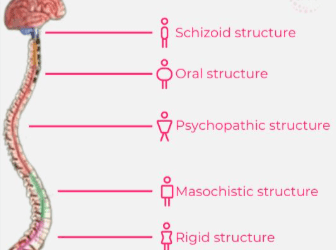In the journey of self-discovery and psychological healing, few paths go as deep as shadow work. Today, I want to share insights from our recent meditation session that explores the intersection of Jungian shadow work, somatic experiencing, and other post-Jungian therapeutic approaches. This meditation represents an evolution of how I integrate various therapeutic modalities to help people connect with and transform their relationship to the shadow aspects of their psyche.
The Theoretical Foundation
This meditation draws from several therapeutic traditions that build upon Jung’s original insights about the shadow. The approach combines:
- Somatic Experiencing by Peter Levine: Focusing on how trauma and difficult emotions manifest in the body
- Process-Oriented Therapy by Arnold Mindell: Working with awareness of physical sensations as pathways to psychological insight
- Voice Dialogue by Sidra and Hal Stone: Recognizing and working with different parts of the self
- Internal Family Systems (IFS) by Richard Schwartz: Understanding how different aspects of our personality function as a system
As I mentioned in the recording, these are largely somatic and post-Jungian therapies that build on Jung’s foundational work while incorporating bodily awareness as a crucial element in psychological transformation.
Understanding the Shadow Self
Before diving into the meditation practices, let’s clarify what we mean by the “shadow.” The shadow contains aspects of ourselves that we’ve disowned, rejected, or repressed. These aren’t necessarily negative qualities—they can include positive traits we’ve denied ourselves permission to embody.
Your shadow might include:
- Emotions you avoid because they feel threatening
- Parts of your personality you’ve been taught are unacceptable
- Qualities you strongly dislike in others (often projections)
- Strengths you’re afraid to claim
The Jungian shadow concept recognizes that what we push into unconsciousness doesn’t disappear—it influences us behind the scenes, often emerging in relationships, dreams, and moments of emotional intensity.
Why Somatic Shadow Work Is Different
Traditional shadow work often focuses on intellectual insight, dream analysis, or active imagination. While these approaches are valuable, they sometimes miss the embodied nature of our psychological patterns. As psychological research advances, we increasingly understand that emotions, memories, and psychological patterns are stored in the body as well as the mind.
Somatic shadow work acknowledges that:
- The body holds memory and emotional patterns
- Physical sensations provide direct access to psychological material
- Transformation happens through embodied experience, not just intellectual understanding
- The subcortical brain (brainstem, limbic system) processes emotional experiences in ways different from our conscious awareness
By working with the body, we can sometimes bypass the intellectual defenses that protect the shadow and access deeper material more directly.
Key Elements of the Meditation
1. Creating a Safe Container
The meditation begins with establishing safety—finding a comfortable space, acknowledging ambient noise as part of the process, and ensuring you’re not doing anything that requires focused attention (like driving). This safety is essential because shadow work can bring up intense feelings that require a container.
2. Mapping the Psyche
The instruction to “map your psyche” invites exploration of what I call “implicit emotions”—the deep relationship between your inner world and outer experience. These are not just surface feelings but fundamental emotional patterns that shape how you relate to life. Examples include:
- Feeling trapped
- Feeling inferior
- Feeling powerless (in different ways)
- Feeling helpless or paralyzed
This mapping process helps identify the emotional territory that your shadow self occupies. It’s about noticing what you avoid or what you’re constantly trapped in experiencing.
3. Beyond the Intellectual
A crucial instruction in the meditation is to “turn the event into a state of being.” This reflects a key principle of somatic trauma work: we’re not analyzing events intellectually but experiencing the bodily states they create. As the meditation states:
“Don’t analyze it and don’t think about it intellectually, but just listen to the energy of this thing that is your shadow in your body.”
This distinction is essential. Traditional therapy often gets caught in storytelling without changing the embodied patterns that maintain our symptoms.
4. Bodily Awareness
The meditation guides attention through different areas of the body, noticing:
- The spine (curling, rigidity, looseness)
- Extremities (limb, tingling)
- Chest (hot, cold, heavy, light, tight)
- Stomach (locking, pain, hunger, blankness)
- Jaw (tension, pain radiating to ear)
This methodical body scan helps identify how the shadow manifests in physical form. The connection between psychological patterns and physical sensations is a core insight of somatic psychology.
5. Curious Attention
Throughout the meditation, there’s an emphasis on curiosity rather than judgment:
“Don’t judge them as good or bad, even if they’re overwhelming or they’re upsetting or just an unpleasant feeling. Just try and turn a curiosity towards them.”
This curious stance is a metacognitive position—being aware of what’s happening without becoming completely identified with it. In IFS terms, this represents “Self energy” relating to a part rather than being completely taken over by the part.
6. Sensory Channels
The meditation guides exploration through multiple sensory channels:
- Somatic: Physical sensations in the body
- Visual: Colors, images, spatial awareness
- Auditory: Sounds, tones, words
- Meaning-making: How these experiences connect to life patterns
This multi-channel approach draws from Process-Oriented Psychology, which recognizes that psychological material moves between these channels. Following the flow of experience across channels often leads to deeper insight.
7. Amplification
The instruction to “amplify” difficult feelings runs counter to our usual instinct to diminish discomfort:
“If you feel scared like you’re a mouse in a field hiding from a hawk, I want you to get scarer.”
This paradoxical approach resembles exposure therapy and helps bring unconscious material fully into awareness where it can be integrated. It’s based on the understanding that what we resist tends to persist.
8. Integration and Protection
The meditation acknowledges protective parts that want to shield us from shadow material:
“Start to notice these other healthy parts that want to protect you from the shadow… try and thank them if they come up for their compassion and their need to protect you.”
This recognition of the protective function of resistance is a key insight from IFS therapy. By honoring these protective parts rather than fighting them, we can create more internal harmony.
9. Embodied Completion
The meditation concludes with physical movement—stretching, wiggling, crossing arms over the chest—to help integrate the experience and return to ordinary consciousness. This physical completion is essential in somatic work to avoid leaving clients in a dissociated or incomplete state.
Benefits of This Approach
This somatic shadow work meditation offers several advantages:
- Direct Access: By working with bodily sensations, we can access shadow material that might be difficult to reach through talk therapy alone.
- Integration: The approach addresses both conscious and subcortical brain processes, promoting more complete integration.
- Self-Regulation: Learning to stay present with difficult sensations builds capacity for emotional regulation.
- Reduced Projection: As we own our shadow qualities, we project them less onto others, improving relationships.
- Energy Release: Shadow material consumes psychic energy to maintain repression; integration frees this energy for creative use.
- Authenticity: Working with the shadow allows access to a more complete, authentic sense of self.
Common Challenges in Shadow Work
This type of meditation isn’t without challenges:
- Overwhelm: Shadow material can sometimes feel too intense, which is why the meditation emphasizes creating safety first.
- Resistance: Protective parts may strongly resist exploring shadow material, requiring patience and self-compassion.
- Spiritual Bypassing: Some practitioners may use meditation to avoid rather than engage with difficult material.
- Need for Support: Deep shadow work is often best done with professional support, especially when traumatic material emerges.
Practical Applications
The insights gained from this meditation can be applied in daily life:
- Emotional Awareness: Notice when you have disproportionate emotional reactions (often shadow triggers)
- Relationship Patterns: Identify recurring conflicts that may reflect shadow projections
- Dream Work: Pay attention to dream figures that carry shadow energy
- Creative Expression: Use art, writing, or movement to give form to shadow aspects
- Self-Compassion: Practice accepting the disowned parts of yourself with kindness
The Biological Basis
Modern neuroscience supports this approach. The polyvagal theory developed by Stephen Porges helps explain how our nervous system responds to perceived threats, and how somatic work can help regulate these responses. Meanwhile, research on memory reconsolidation suggests that accessing emotional memories while in a different bodily state can help transform them.
In essence, this meditation operates at the intersection of ancient wisdom and cutting-edge neuroscience, reflecting what Antonio Damasio calls the inseparable nature of mind and body.
Beyond Individual Psychology
While this meditation focuses on individual healing, the shadow concept has broader applications. Jung recognized that the shadow operates at cultural and collective levels as well as personal ones. Our societal shadows—the aspects of our collective experience we deny or repress—influence everything from politics to environmental policy.
By doing our personal shadow work, we contribute to collective healing, making us less susceptible to mass projection and more capable of seeing clearly in complex situations.
Conclusion
This somatic approach to shadow work represents an integration of Jungian psychology with contemporary somatic practices. By engaging the body as a pathway to the unconscious, we can access and transform shadow material that might otherwise remain stubbornly out of reach.
I invite you to explore this meditation as a tool for self-discovery, remembering that shadow work is not about eliminating parts of yourself but about expanding your capacity to hold the full spectrum of your humanity with awareness and compassion.
For those interested in exploring these concepts further, the Taproot Therapy Collective podcast offers additional resources on depth psychology and somatic approaches to healing.
About the Author
Joel Blackstock is a therapist at Taproot Therapy Collective specializing in depth psychology, somatic approaches to trauma, and the integration of neuroscience with traditional psychological wisdom.
Meta Description: Explore a transformative somatic approach to Jungian shadow work in this comprehensive guide that combines body-centered awareness with depth psychology for psychological integration and healing.
Tags:























0 Comments